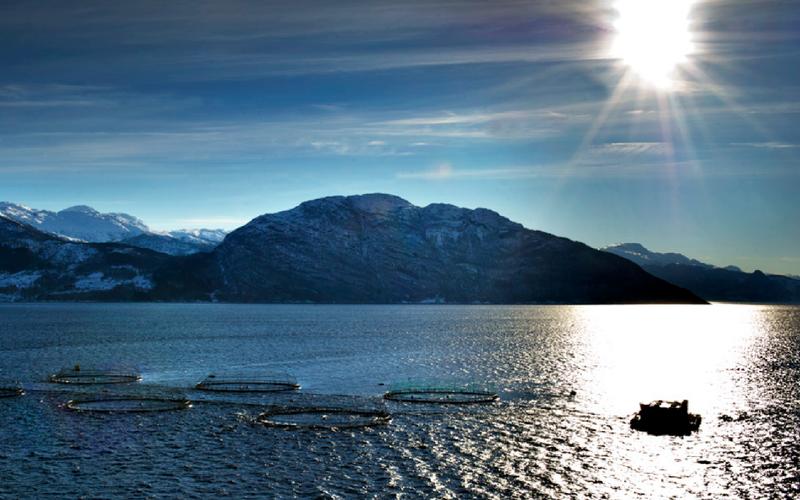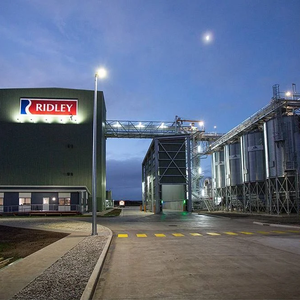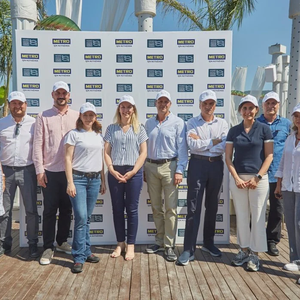The Norwegian government unveiled its aquaculture strategy that aims to facilitate increased growth within a sustainable framework.
“The aquaculture industry has become an important industry in Norway and is our second-largest export industry. With this strategy, the government wants to set the course for the next 10-15 years and facilitate sustainable growth in the aquaculture industry. The strategy lays down guidelines on how we together - business, the research environment and the authorities - should solve the challenges we face and seize new opportunities,” said Minister of Fisheries and Seafood, Odd Emil Ingebrigtsen.
“If the industry is to continue to grow, there are several challenges that must be solved. They apply in particular to fish health and fish welfare, climate and environmental impact, access to sustainable feed resources and good and suitable area. As the world's largest producer and exporter of Atlantic salmon, good access to the markets is also crucial. The aquaculture industry is a complex industry to manage, with the need for more professional considerations from various sector authorities and with intersecting interests to be safeguarded. Efficient, coordinated and knowledge-based management is important for supporting and strengthening sustainable growth. At the same time, arrangements must be made for the simplest possible management,” the government said.
“We want to facilitate even more, sustainably produced food from the sea and at the same time create more profitable, private jobs in rural and coastal Norway,” said Ingebrigtsen.
The goal of sustainable growth in the aquaculture industry means that the government will facilitate that the industry:
- safeguards good fish health and fish welfare.
- produces sustainable seafood with a low climate and environmental footprint.
- produces healthy and safe seafood that meets nutritional needs and food preferences.
- has good access to the markets where the product is competitive and can document that Norwegian seafood satisfies the requirements for, among other things, food safety, sustainable production and fish health and welfare.
- contributes to good and profitable jobs and local ripple effects along the entire coast and income to the community.
Research, innovation and development are fundamental focus areas going forward. The same applies to digitization and sharing of data, the work of ensuring market access and documentation that the seafood that is produced and exported is sustainable. Salmon lice and escaped farmed salmon are currently the biggest threats to wild salmon, and here further development of the traffic light system, measures against escape and technology development will be important. The same applies to the work to reduce the climate footprint of the industry, where sustainable feed resources, electrification and circular economy are central. More than 70% of the greenhouse gas emissions from the aquaculture industry originate from fish feed, at the same time as around 90% of the raw materials are imported. The government will also invest in alternative sustainable feed resources nationally.
The strategy also launches several new measures. A committee will be set up to review the objectives for the permit regulation of the aquaculture industry, the whole of the system and how it can be adapted to meet both current and future challenges. How the administration can become more efficient and coordinated will also be considered. The government aims for the committee to start its work in the autumn.
Better fish health and fish welfare will be crucial for success. The government will take a closer look at whether the incentives for breeders can be increased and will consider functional requirements related to biosafety, such as infection control, for various forms of operation, methods and technologies. Increased use of zoning will be also considered as infection prevention measure in the aquaculture industry. The ongoing pandemic has taught us a great deal about the importance of cohorts as infection control measures.
“To reduce the environmental impact of aquaculture production, we must develop profitable and well-functioning circular value chains. We must take full advantage of the opportunities inherent in marine raw materials and get good reuse of residual raw materials and sludge. Today, much of the raw material can only be used for energy recovery or to feed animals that do not enter the food chain. The government will therefore strengthen the knowledge base with a view to obtaining regulations that are better adapted to the utilization of marine raw materials, residual raw materials and sludge,” the government said.
Check out the strategy here (Norwegian).













